Sign in
Don't have an account?
Don’t miss out! Sign up to enjoy:
- A new account discount
- Easy and fast re-ordering
Menu
Share
Share
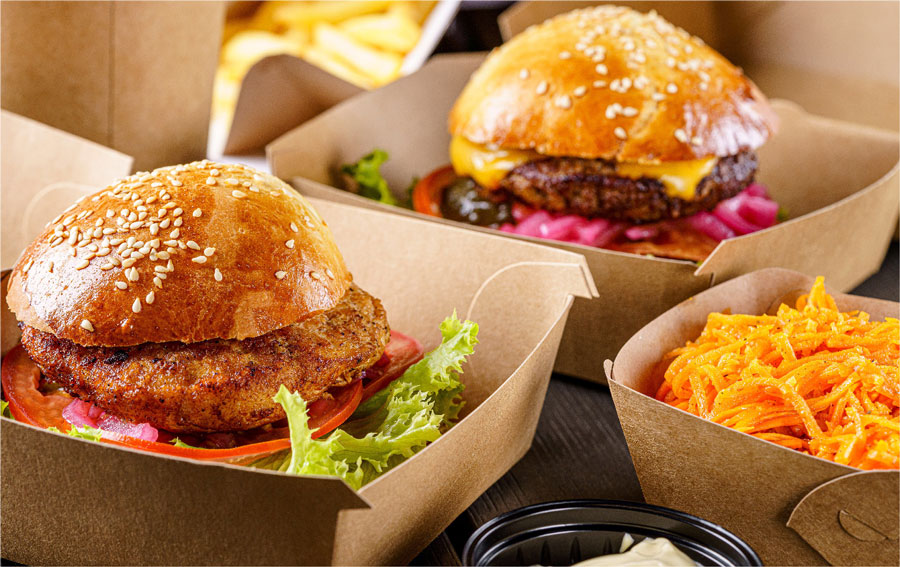
The lockdowns have changed the landscape of food service across Australia, without a doubt. With limitations on in-house diners, on staff and with the known risks of high-density, high-traffic environments, many restaurants are venturing into food delivery.
For those who have only just introduced takeaway dining services, getting started presents a number of challenges. Will you contract an existing delivery service or use your own drivers? How many takeaway orders can you and your staff cater to? Perhaps most importantly, how do you ensure your food remains presentable, fresh and is delivered safely?
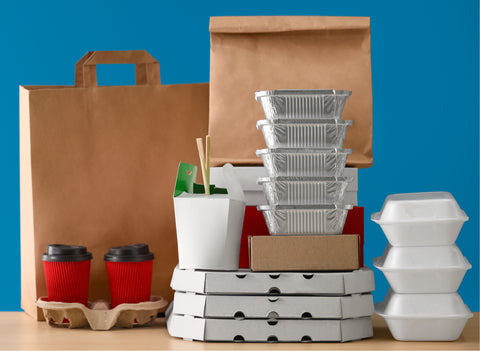
How you package your food can have a huge impact on the quality of your takeaway service. In most cases, you can’t just use any old kind of packaging for every dish you may serve. In addition, with so many business looking to transition to a more eco-friendly approach to consumption, some choices are better than others.
Below we will provide some examples of how to pack your food for optimum satisfaction, and present some options for those who are looking for ways to offset their impact on the local environment.
Please take note that today’s blog will be looking at meal containers only. A future installment will explore beverage items and cutlery.
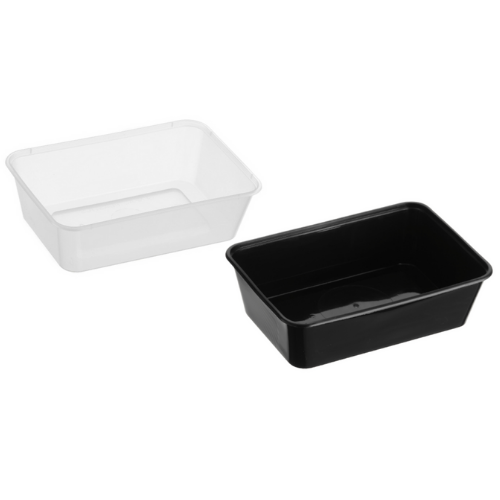
The classic rectangle container definitely does the job for most places. But is this the right choice for you?
Plastic takeaway containers are best for dishes that should be packed in close to airtight conditions, and are an excellent choice for things like;
– rice and noodles
– curries
– stir-fries
– goulashes
– other hot, saucy dishes (we recommend wrapping these in cling film, especially for oily dishes that risk leaking when the container is full)
They can also be suitable for cold cakes.
Plastic bowls and lids are also great for dishes like
– pho and other soups
– nourish bowls
– some salads
There are also sauce containers for condiments such as raita, aoli, hot chilli sauce and others.
Plastic containers are NOT the best choice for:
– Hot breads such as naan
– Hot sandwiches and toasties
– Hot puddings and cakes
– Chips
– Deep fried, crumbed or coated dishes like fish, chicken tenders, etc.
This is because the condensation within the container from the heat and lack of absorption and air will make these foods soggy.
Pros
Affordability
Plastic containers are among the cheapest options for packaging, making them the right choice for those who operate on low (and even no) margins. If your eats are cheap, or even free, they are the better option to reduce your costs of operation.
Easy Handling
Plastic containers are straight forward and easy to handle with minimal fiddling around and mess. No folding, no gaps. Furthermore, they are very easy to fit in your standard singlet carry bag.
Microwave And Refrigeration Safe
Can’t finish all that food in one go? No problem. Your food will be safe from contamination in the refrigerator and can be safely reheated in the microwave the next day.
Cons
Presentation
Plastic containers are not necessarily the most presentable option. Some foods such as curries will have heavier ingredients sink to the bottom, garnishes can be crushed by the lid and drown into the dish, and it can end up looking like a hot mess (literally). Having black containers can minimize this effect.
Environmental Impact
Plastic containers are not always recyclable. Thankfully, for Bulk Buys, all our Genfac branded containers are 100% recyclable, but be sure to clean them before you dispose of them!
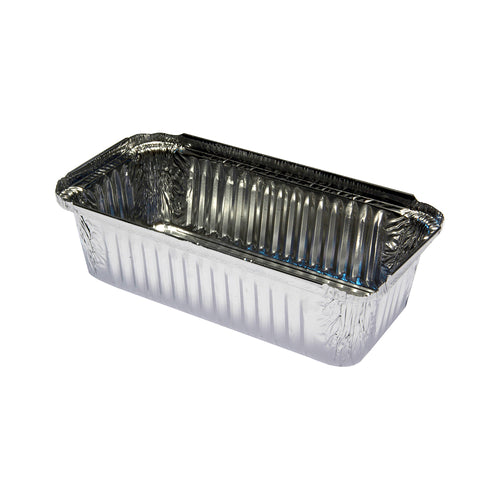
Foil containers are excellent for
– Lasagnas
– Quishes
– Kebabs
– Toasties and hot sandwiches
– Macaroni and cheese
– Falafel and other small hot entrees (such as chicken wings)
– Some salads (pack the dressing separately)
This is because the paper lids offer a degree of moisture absorption and breathability, while the foil containers hold the food without mess, help it to keep its shape and the foil itself helps to retain heat.
Foil containers are not suitable for
– Curries and stir fries
– Soups
– Dressed or wet salads
– Chips (if sealed)
This is because particularly saucy dishes may leak or destroy the paper lid, and chips will become soggy and lose their crispiness.
Pros
Recyclable
You may not realize this, but aluminium foil containers and trays are 100% recyclable! Like with our plastic containers, do be sure to thoroughly rinse them before disposing of them.
Affordable
Like plastic containers, foil containers offer great value for money!
Cons
Fiddly
When packing a foil container, you will need to ensure it’s not overfilled in order to close the container with its paper lid, and press down the edges to seal it, taking a little extra time when getting things ready.
Hot to handle!
When putting very hot food into foil containers, the heat can transfer very quickly. You will need to warn your employees and your customers when handling them, and might want to consider kraft paper carry bags to help prevent coming into contact with the hot container.
Microwave Go Boom
It is most definitely not safe to reheat foil containers in a microwave. Do not do this at home. Or anywhere. Ever.
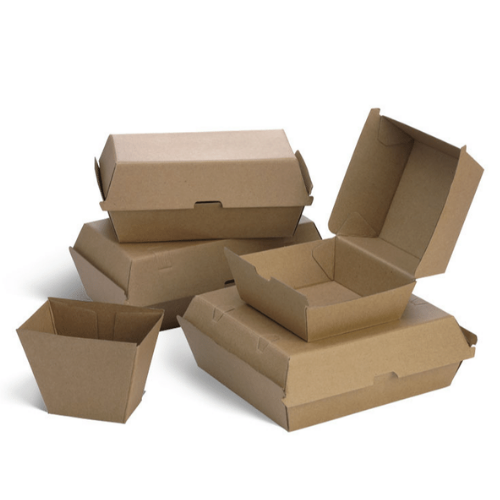
Boxes are a great option for
– cookies
– cakes
– cool sandwiches
– muffins
– undressed salads
– nachos
– deep fried desserts or snacks such as buffalo wings
This is because boxes allow enough breathability to keep food crisp (assuming they have not been cramped into the box) and have room to stylishly present sandwiches, cakes and biscuits.
Boxes are not suitable for:
– liquid-based or saucy dishes
– dressed salads
– hot sandwiches and lasagnas
– anything that requires to be served very hot
This is because of their breathability allowing heat to escape, and their structure which is prone to leakage.
Pros
Recyclable and even biodegradable!
Boxes are recyclable and may even be biodegradable, and are a great way to reduce the impact of your business on the local environment.
Storage space galore!
Because boxes can arrive flat-packed, they offer more storage space than assembled containers.
Cons
Fiddly
Like with foil containers, boxes require a little extra time to prepare. It can be worth assembling these ahead of the dinner rush, but you will need to find space to keep them.
Gotta Eat Fast!
Boxes are not ideal for longterm storage of food, and even being kept overnight in a refrigerator may mean that foods get exposed to odours or tastes they shouldn’t. Food served in boxes should be eaten the same day or transferred to a plastic container if they are being eaten over a few days.
Keep Away From Microwaves and Ovens
Being cardboard, you do not want to take the risk of turning your meal into a flambe-style disaster.
Water Damage!
If exposed to liquid, your box may lose its shape or even tear 🙁
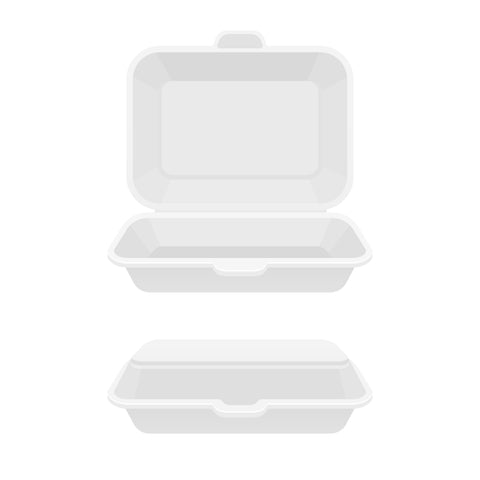
Foam containers are suitable for:
– Pancakes and waffles
– Roasts
– Hot sandwiches and toasties
– Grilled meats and fish
– Burgers
– Hot chips (if not cramped)
– Parmas and chips (if they aren’t saturated)
– Salads (undressed)
– Bentos
– Deep fried snacks such as buffalo wings, chicken tenders and the like
Foam containers are NOT suitable for:
– Soups and sauce-based dishes
– Dressed salads
Pros
Grease Proof!
Unlike cardboard, foam can handle grease and won’t fall apart if exposed to liquid (such as when your customer dresses their salad at home)
Breathability
Foam containers are breathable and can help food to remain crisp or fluffy (don’t let your pancakes sweat!)
Mix It Up!
Many foam containers are compartmentalized, meaning you can offer mixed grills, bentos and other multi-dish meals.
Cons
Bulky
Foam containers tend to be large and there’s little way to minimize the space they take up in your kitchen.
Not So Eco Friendly
Foam containers, sadly, are made from polystyrene and must be taken to a specialist facility to be repurposed, and cannot be put into general recycling.
Storage and Reheating
Foam containers don’t fare well in microwaves and will likely transfer tastes and smells in your refrigerator.
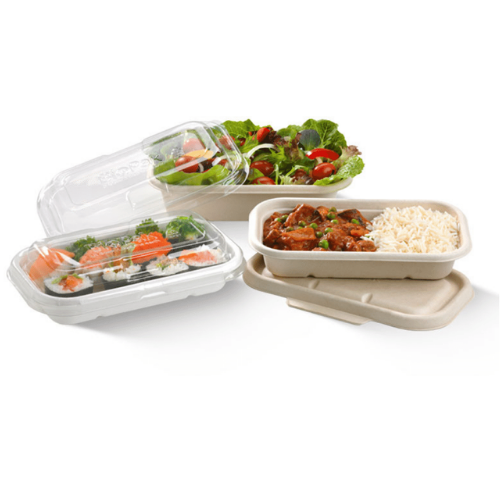
The new kids on the block as far as takeaway goes, bamboo and sugarcane containers are suitable for:
– Hot greasy foods such as lasagna, poutine and paella
– Curries and stir-fries
– Deep fried desserts and snacks
– Salads (dressed and undressed)
– Desserts including cookies and cakes
– Sandwiches both hot and cold
Sugarcane containers are NOT suitable for…
Well, you see, I wouldn’t say there is anything short of hot coals that bamboo and sugarcane containers can’t be compatible with!
This is because there are many styles of containers available, from clamshells and lunch packs to bowls and rectangular containers with lids! There is a bamboo or sugarcane alternative for almost every style of container, making them a great option to convert your entire business to a more sustainable operation.
Pros
Sustainable Materials and Home Compostable
Sugarcane containers are made from the byproduct of cane sugar harvesting, and is a rapidly renewable resource. Bamboo containers are made from bamboo pulp, and while it isn’t a byproduct – it does grow quickly and improves soil quality.
Both containers can be composted at home if they have NO PLA lining, meaning that their proper disposal has minimal impact on our planet. For containers that are PLA lined, specialist services can compost them at higher temperatures. They are possibly the best choice for those who put being eco-friendly first!
Versatility
As aforementioned, sugarcane containers come in all shapes and sizes. Need breathability? Get a clamshell or a tuckbox. Need something for a soup? Get a bowl with a lid! Need something for gelato? We’ve got cups!
Sturdy
Though thinking about something made from a sugar byproduct may mislead people into believing it’s a delicate material, sugarcane containers are sturdy and durable until broken down in the compost.
Refrigeration and Microwave Safe
Sugarcane containers can be safely refrigerated and reheated, but mind your hands after using your microwave as the surface may become hot and be sure to check any compatible lid you are using can be reheated.
Cons
Lids
While there are sugarcane and even bamboo lids for some containers, other containers and certain foods will require you to choose a non-sugarcane lid. Thankfully, there are recyclable options available.
Costs
Sugarcane and bamboo containers are still new to the market and, as a niche product, can come in at a higher cost than plastic, foam and cardboard alternatives.
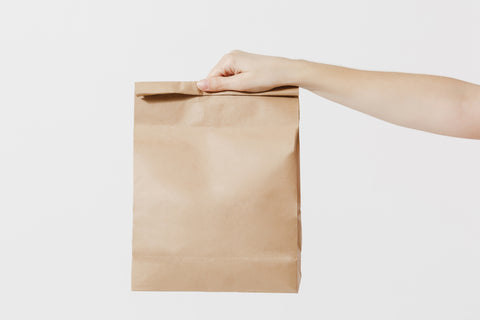
As a final note to this blog post, the tried-and-true tuck shop paper wrap is sometimes the BEST option for fish and chips, and brown paper bags might just be the best thing for chiko rolls. Paper bags offer breathability and grease absorption so that these foods retain their taste and texture. Sometimes, the oldies really are goodies; no need for something fancy. As a bonus, recycled and sustainably produce brown and kraft paper bags are out there!
And that’s all for today! Bon Appétit 🙂





Great Prices
Great prices, reasonable shipping rate, easy to use site and checkout, process is quite speedy, followed by fast confirmation of my order, love that I had the choice to be notified via text not just email, far more convenient. Recommend trying these guys, I would use them again
Tash Radford





Reliable Service
Prompt, efficient, reliable service, thats all you need from a company, purchased items and within a day or two items arrived, that is fast. Also, very happy with the quality.
Mariam Bekdemir





Amazing Products
Ordered some things from BulkBuys and within a day they arrived! Thank you for the fast delivery and amazing products!!
Ellen P





Very Helpful & Knowledgable
Amazing customer service, very helpful and knowledgeable. Quality products at very competitive prices. Highly recommend! They beat the prices of my previous supplier and I am very delighted with the vast range of quality products they have to offer. Definitely found my new suppliers! Thanks Ben!
Nicolas Burgueno





Quick Delivery
Great products and extremely quick delivery. Definitely recommend ☺️
Bianca Anthes
We accept
© 2023 BulkBuys Pty Ltd